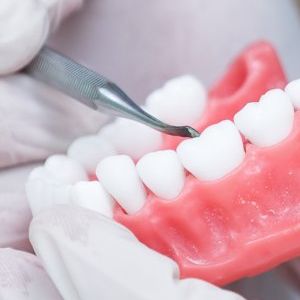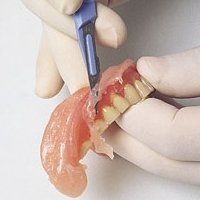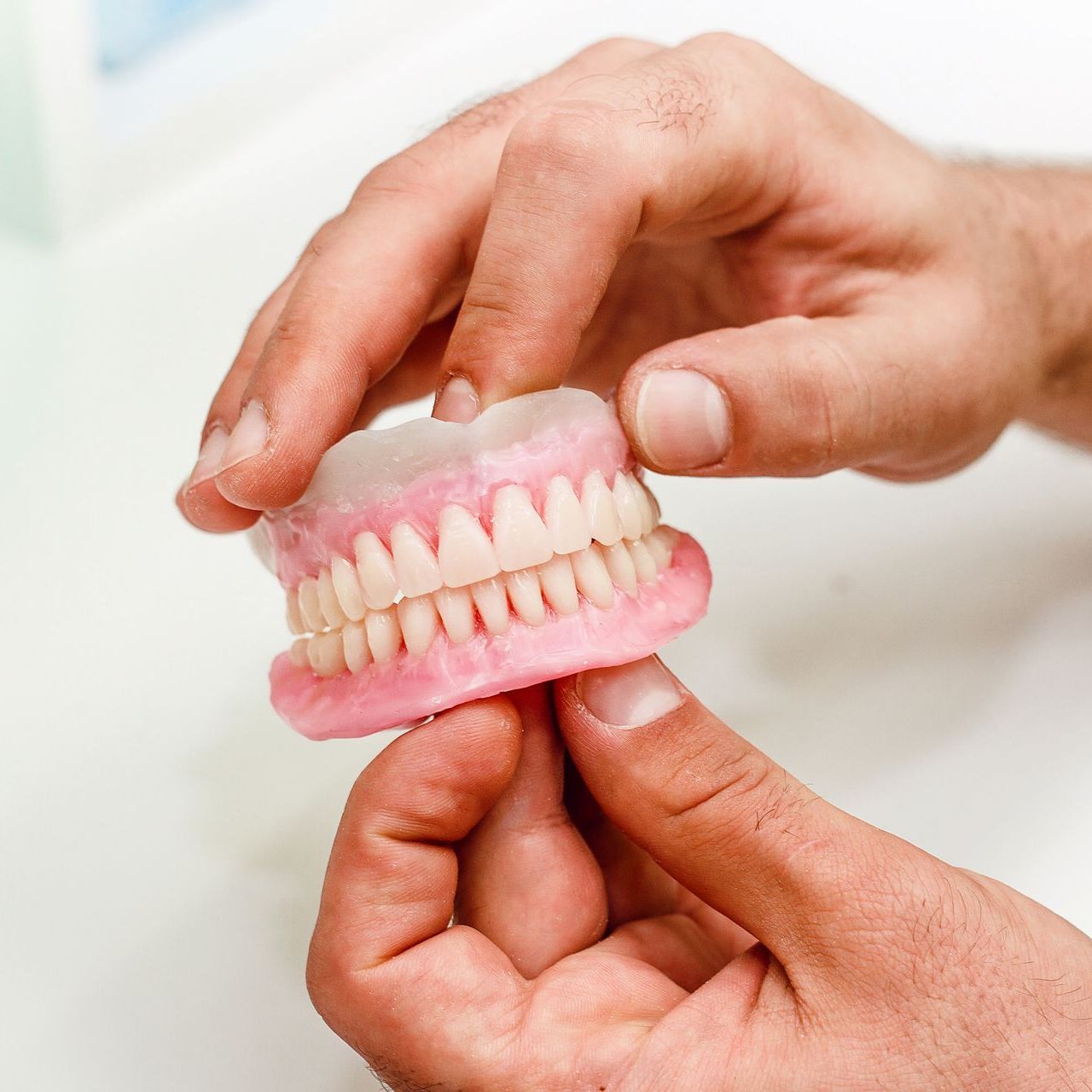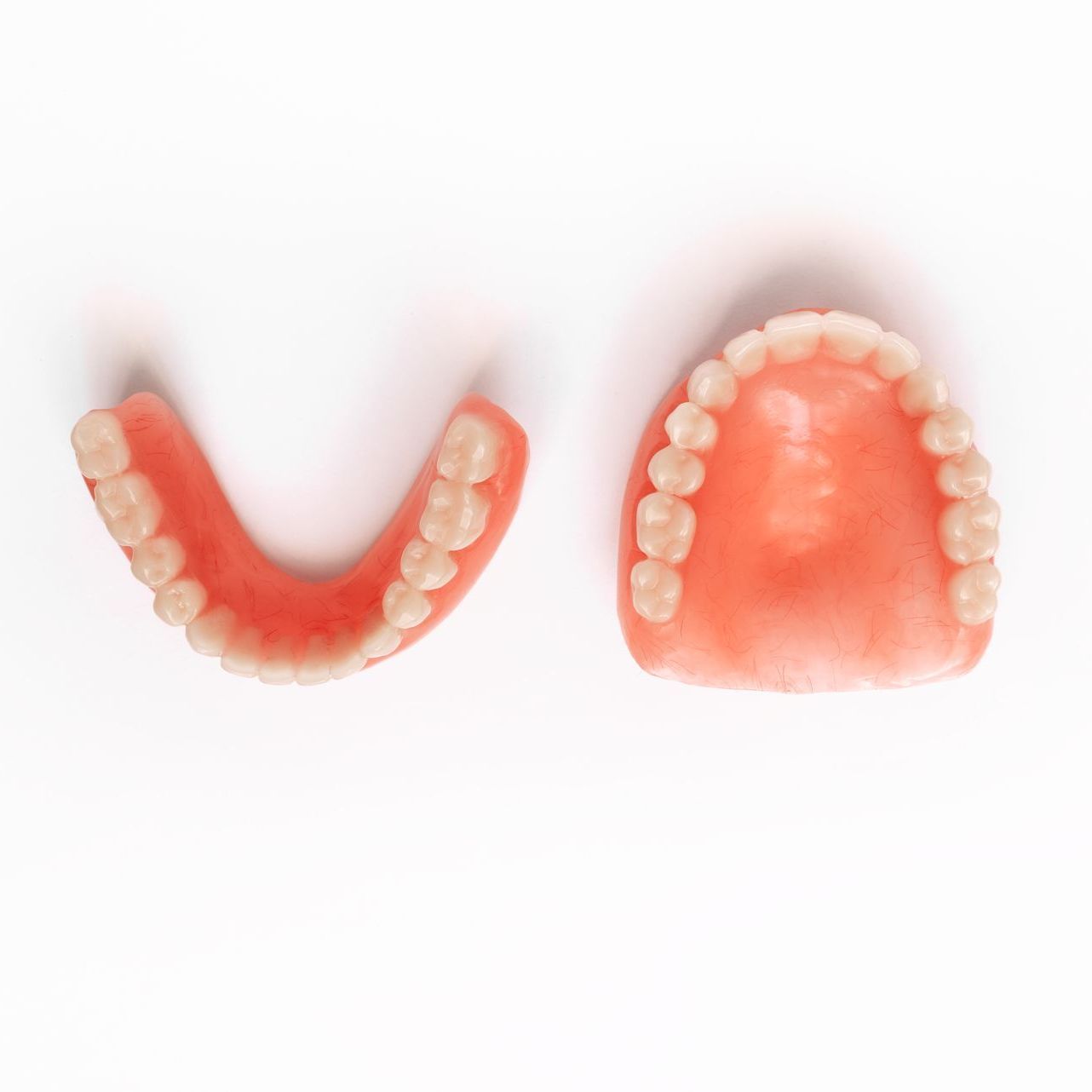Sherbrooke 819 346-6312 / Stanstead 819 876-5298 / Coaticook 819 849-2074
Sherbrooke 819 346-6312 / Stanstead 819 876-5298 / Coaticook 819 849-2074
SERVICES_ MODIFICATION AND REPAIR of dental prostheses
Modification of dental prostheses
Do you have sore, ulcerated gums?
Does your denture hurt despite a precise fit?
Are you unable to use implants to stabilize your lower prosthesis?
In order to curb the increasing instability that causes pain and injury to the gums, relining, rebasing, the soft base or the Myoloc system are options that will allow you to keep your current prosthesis for a few more years.

01
RELINING
Relining involves adding acrylic to the inside of the denture to fill the slight resorption of the gum. Often used for minor adjustments, relining is carried out using an impression of the gum within the existing denture, enabling the denturist to stabilize most complete removable dentures in a short space of time. There are two ways to reline: either conventionally (with impressions and baking in the laboratory) or immediately (directly in the chair). Your denturist will work with you to determine the best option for your condition.
02
SOFT BASE (LOWER PROSTHESIS)
The soft base can be manufactured at the same time as a new complete prosthesis, or simply added onto an existing prosthesis. This solution involves attaching a soft rubber cushion to the lower denture. More porous than a standard acrylic base, the soft base adheres better to the gums, increasing the stability and comfort of a traditional denture. To maintain good oral and gum health, we recommend that you have your soft base checked every year and replaced every 2 to 3 years before it turns brown and causes bad breath.


04
REBASING
Rebasing requires more laboratory work than relining. It involves replacing the entire pink acrylic structure that makes up the removable prosthesis. The teeth are thus preserved and repositioned on a new acrylic base adjusted according to a complete mould of the gum.
05
THE MYOLOC SYSTEM
This simple procedure is designed to improve the retention and stability of the prosthesis, which promotes better speech and makes chewing easier. These are small metal rods installed at the base of the lower denture on which the tongue rests for greater stability. The Myoloc system helps to reduce the accumulation of food trapped under the denture and also has the advantage of being invisible and not encroaching on soft tissue. It is recommended for people who no longer have much of their gums and for all those who have tried, unsuccessfully, every means to stabilize their lower dentures. The Myoloc system remains the least expensive and most accessible solution.

_ modification and repair of dental prostheses
Repair of dental prostheses

It is almost always possible to repair a denture. That said, it's essential never to play denturist by trying to glue the broken part or pieces back together. Regardless of the extent of the repair, using glue or any other product could cause further damage to your dentures, not to mention the danger of poisoning from the solvents and additives contained in contact or instant adhesives.
To avoid the inconvenience of finding yourself without dentures during the repair period, we strongly recommend that you keep your old dentures. Obviously, they will not fit like your current dentures, but with a little denture adhesive, they will allow you to function temporarily. If it is impossible to carry out and guarantee a lasting repair, the option of a new complete denture or relining may be two solutions to consider.
Why choose Larochelle?
Since 1985, the Clinique de Denturologie Larochelle has become a benchmark for dental prostheses. The expertise of this family business is based on a passion for recreating complete or partial dentitions that meet the expectations and needs of their clients. The Clinique de Denturologie Larochelle uses the latest technologies. Free personalized evaluation.



